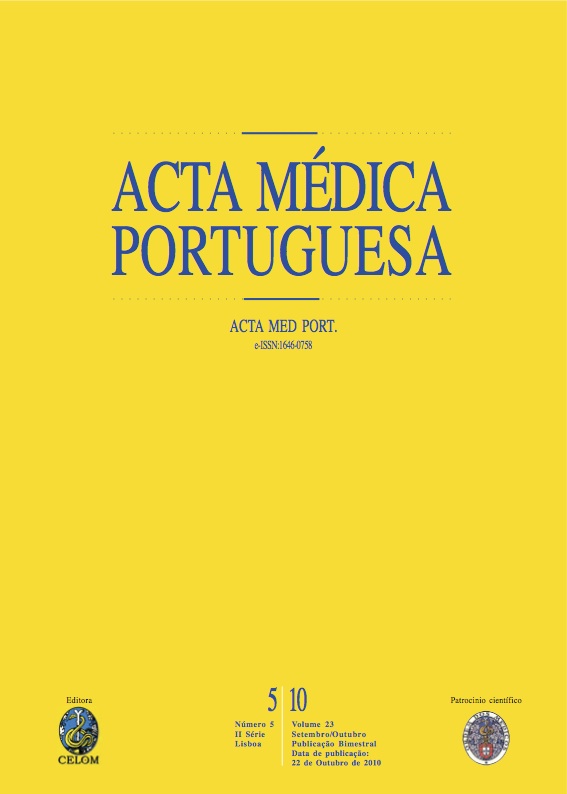Disorders of the neonatal liver and bile ducts.
DOI:
https://doi.org/10.20344/amp.727Resumo
Liver and biliary tract disorders in the neonate are relatively rare and often complex.To evaluate the incidence of neonatal liver and biliary tract disorders, main causes, clinical presentation, treatment and outcome. Material andClinical, imagiological, laboratory, pathological and autopsy data concerning all newborns with liver and biliary tract disorder admitted to the neonatal intensive care unit of five tertiary medical centers from the north of Portugal, between 1997 and 2006, were retrospectively analysed.77 neonates (incidence 0.5% - 77/14505 admissions); 44M/33F; gestational age 34 weeks (25-41); preterm 50 (65%); birthweight 1980 g (570-4130), < 1500 g 29 (38%). Several causes were identified and classified as infectious, metabolic, anatomic/structural, neoplastic, vascular, traumatic, immune, genetic and idiopathic. Clinical signs appeared between days 1 and 61 of life. Jaundice was the most frequent clinical sign (92%). Cholestasis occurred in 67 (87%) patients. Duration of hospital stay was 35 days (5-146); 18 patients (23%) were deceased. Autopsy study was diagnostic in 8 cases (10%).Nosocomial and intrauterine infection were the most common causes of liver and biliary tract disease. Several other rare causes represented an important challenge in diagnosis and treatment, and some were fatal. Awareness of the spectrum of liver and bile duct disorders in the neonate and recognition of the key clinical features are essential to optimize outcome.Downloads
Downloads
Como Citar
Edição
Secção
Licença
Todos os artigos publicados na AMP são de acesso aberto e cumprem os requisitos das agências de financiamento ou instituições académicas. Relativamente à utilização por terceiros a AMP rege-se pelos termos da licença Creative Commons ‘Atribuição – Uso Não-Comercial – (CC-BY-NC)’.
É da responsabilidade do autor obter permissão para reproduzir figuras, tabelas, etc., de outras publicações. Após a aceitação de um artigo, os autores serão convidados a preencher uma “Declaração de Responsabilidade Autoral e Partilha de Direitos de Autor “(http://www.actamedicaportuguesa.com/info/AMP-NormasPublicacao.pdf) e a “Declaração de Potenciais Conflitos de Interesse” (http://www.icmje.org/conflicts-of-interest) do ICMJE. Será enviado um e-mail ao autor correspondente, confirmando a receção do manuscrito.
Após a publicação, os autores ficam autorizados a disponibilizar os seus artigos em repositórios das suas instituições de origem, desde que mencionem sempre onde foram publicados e de acordo com a licença Creative Commons









